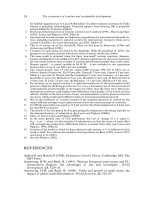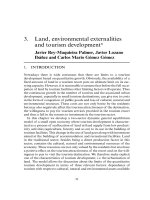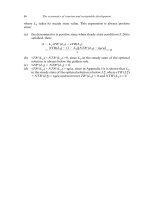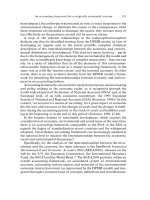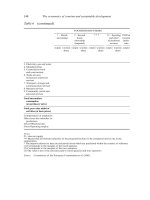THE ECONOMICS OF MONEY,BANKING, AND FINANCIAL MARKETS 439
Bạn đang xem bản rút gọn của tài liệu. Xem và tải ngay bản đầy đủ của tài liệu tại đây (43.33 KB, 1 trang )
CHAPTER 16
GLOBAL
The Money Supply Process
407
The Worldwide Decline in Reserve Requirements
In order to meet the demand for withdrawals
by depositors or to pay the cheques drawn on
depositors accounts, depository institutions
need to keep sufficient reserves on hand. In
most countries, banks hold a certain amount
of non interest-bearing reserves because of
legally imposed reserve requirements. These
reserves are called required reserves. The
rationale for reserve requirements is that
reserves are necessary for monetary control
purposes and, to a lesser extent, for the protection of depositors and the stability of the
banking system.
In recent years, however, central banks in
many countries in the world have been reducing or eliminating their reserve requirements.
In the euro area the required reserve ratio is 2%
of bank deposits, while in the United States it
is 3% (rising to 10% for large deposits). Canada
has gone a step further: financial market legislation in June 1992 eliminated all reserve
requirements over a two-year period. The central banks of Switzerland, New Zealand, and
Australia have also eliminated reserve requirements entirely. What explains the downward
trend in reserve requirements in most countries?
You may recall from Chapter 11 that
reserve requirements act as a tax on banks.
Because central banks typically do not pay
interest on reserves, the bank earns nothing
on them and loses the interest that could
have been earned if the bank held loans
instead. The cost imposed on banks from
reserve requirements means that banks, in
effect, have a higher cost of funds than other
deposit-based financial institutions not subject
to reserve requirements, making them less
competitive. Central banks have thus been
reducing reserve requirements to make banks
more competitive and stronger.
Although central banks have been reducing or eliminating their reserve requirements,
banks still want to hold reserves to protect
themselves against predictable and unpredictable cash and clearing drains. Hence,
desired reserves is the appropriate term to
describe the reserves of deposit-taking financial institutions in a system without reserve
requirements.
Bank s purchase and sale of these securities). Government securities are by far the
Bank s largest category of assets, accounting for over 80% of the balance sheet.
2. Advances. The second way the Bank of Canada can provide reserves to the
banking system is by making advances (loans) to banks. For the banks, the
Bank of Canada advances they have taken out are referred to as borrowing
from the Bank of Canada or, alternatively, as borrowed reserves. There is a
big difference between normal advances and extraordinary advances (to be
discussed in detail later) lent by the Bank of Canada to troubled banks to prevent bank and financial panics. Normal advances are fully collateralized and
generally overnight in duration. The interest rate charged banks for these
loans is called the bank rate.





